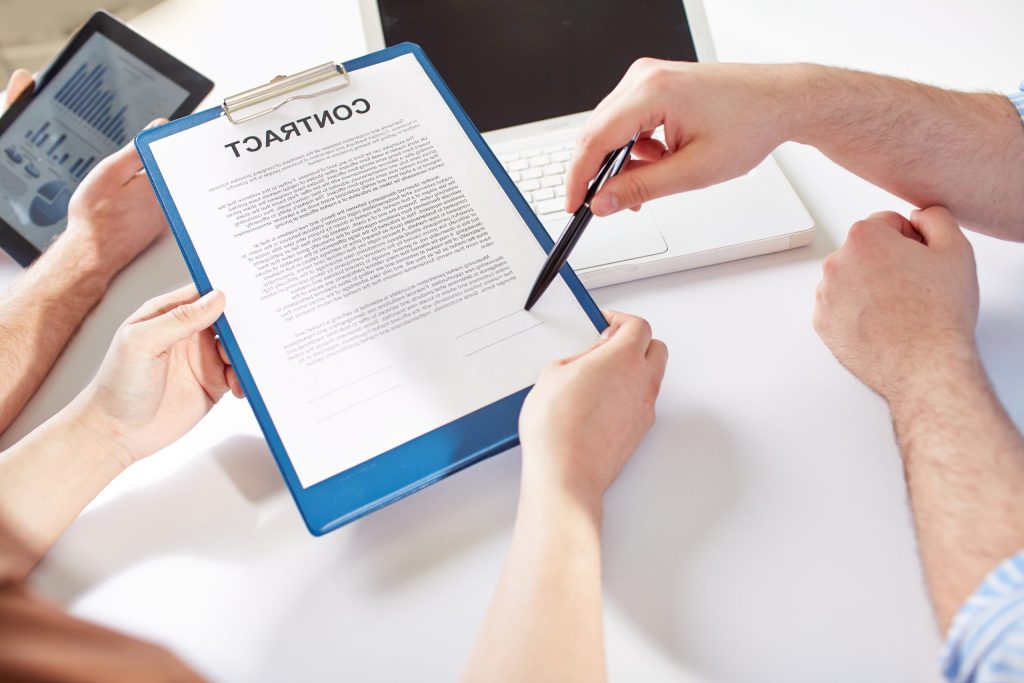Your Guide to Security Monitoring Service Agreements

Home security systems are on the rise, found in 28% of U.S. households with internet access [1]. It’s crucial for homeowners to know exactly what they’re agreeing to. Understanding security monitoring agreements can be confusing, but it doesn’t have to be. This guide simplifies the details, making it easier for anyone to feel secure in their choices. Whether looking for basic features or advanced options, getting informed helps in making the best decision. Keep reading to learn more about monitoring agreements and what they mean for home security.
Key Takeaway
- Security monitoring service agreements outline the duties of clients and providers.
- These agreements typically detail performance metrics, liability limits, and communication protocols.
- Knowing the terms of an agreement supports effective security monitoring and provides peace of mind.
Understanding Security Monitoring Service Agreements
Security monitoring service agreements explains the rules for monitoring services. These services can include alarm systems, fire alarms, and video cameras. Agreements help clients and service providers know what to expect from each other. For clients, they can see what they are paying for, while providers have their duties written down.
Clients should look for a few key parts in their agreements. One important part is the scope of services. This section explains what security features the client will receive. For example, it might say if the service includes door locks, fire alarms, or smart cameras. Knowing what is included helps clients feel good about their security choices. This also prevents misunderstandings later.
Another key part is the performance metrics. This section tells clients how quickly the provider will respond when an alarm goes off. For instance, the provider might promise to call the homeowner within five minutes if an alarm triggers. This information helps clients know what kind of service they can expect.
Important Components of the Agreement

A good security monitoring service agreement has several important parts. One major part is the duration and renewal terms. Many people don’t realize that while monthly fees can start as low as $8.95 with no contract, most providers prefer longer agreements. Standard contracts usually last between 12 to 60 months, with 36 months being the most common [2]. Longer contracts often mean lower monthly fees because the cost of equipment is spread out over time.
Another key part is the penalties for not following the agreement. If either the client or service provider doesn’t do their job, there should be consequences. These penalties might include discounts or credits if the provider fails to respond to alarms on time. This part helps both sides keep their promises and provide good service.
Clients should also look for information about liability limitations. These sections explain what the provider is responsible for if something goes wrong, like theft or damage. For example, if a system fails and a loss occurs, the provider might limit their responsibility to about $500. Clients should be aware of this, as they might need extra insurance for complete coverage.
Liability Limitations and Exclusions
Liability limitations are common in security monitoring agreements. These parts of the contract protect service providers from being responsible for all losses or damages. For example, if there is a burglary and the alarm system fails, the provider might not cover the full amount of losses. Usually, the limit is about $500, which can surprise clients. Knowing this limit is important because it might lead them to think about getting extra insurance for their property [3].
Exclusions in the agreement show what is not covered by the service. This could include things like natural disasters, acts of terrorism, or problems caused by the client. Understanding these exclusions helps clients know what risks they are taking. Clients should read this section carefully to avoid misunderstandings later.
By knowing the liability limitations and exclusions, clients can prepare for possible issues. This knowledge helps them feel more secure in their choices. They will understand what protection they have and where they might need extra coverage.
Communication and Monitoring
Communication is very important in security monitoring. The agreement should clearly explain how the provider and client will talk about alarms, incidents, and updates. For example, it should say if the provider will contact the client by phone, email, or a mobile app. Clear communication helps clients know what is happening with their security system.
The agreement should also say how often clients will get updates. This can include regular reports on how the system is working and any problems that might arise. Regular updates help keep everyone informed and build trust between the client and provider.
Additionally, the agreement should explain how the monitoring and reporting will work. Clients need to know how their security system will be watched and how often they will receive updates about its performance. This information helps clients feel secure, knowing their property is being protected.
Good communication and monitoring create better relationships between clients and service providers. It keeps both sides understanding each other, which is important for keeping a safe environment.
Customization and Negotiation
Clients often have the chance to customize their security monitoring agreements. This means they can negotiate terms to make sure the services fit their specific needs. For example, a client might want to add features like smart security technology or access control options. This flexibility allows clients to create a security plan that works best for them.
When negotiating, it’s important for clients to understand all the terms in the agreement. They should pay close attention to who owns the monitoring equipment. The contract should explain whether the clients own the equipment or if they are renting it from the provider. This detail can change who is responsible for maintenance and upgrades. If the provider owns the equipment, they may have more control over repairs or replacements.
Clients should also look for information about amendments and updates in the agreement. This section should allow for regular reviews and changes to the contract as needed. As security needs change, being able to update the agreement helps clients keep their security systems effective.
Reviewing and Updating Agreements
Clients should regularly review their security monitoring service agreements. These reviews help make sure the contract stays current and meets their needs over time. It’s a good idea for clients to check their agreements at least once a year. This way, they can ensure everything still works for them and their security needs.
During these reviews, clients should look for any new technology or service options. If new features are offered, clients may want to update their agreements to include them. They should also pay attention to changes in pricing or performance. Staying informed about these factors helps clients. They can make smart choices about their security services.
Reviewing and updating agreements helps clients stay in control of their security monitoring. It allows them to handle new challenges and ensures they have the best protection possible. By being proactive, clients can maintain a strong security plan that fits their needs.
FAQ
How do security contracts differ between monitored security and diy home security systems?
Monitored security needs a service agreement with a security provider. This means you pay a monthly fee for professional monitoring at a central station. On the other hand, DIY security gives you more control without long-term commitments. With DIY systems, you usually pay less but have to monitor the system yourself. Both monitored and DIY options can include security cameras and video doorbell features.
What should I know about long term contract commitments versus month basis agreements with security companies?
Security providers usually offer both options. Long-term contracts often last 2 to 3 years and have lower monthly fees. Month-to-month plans cost more but give you more flexibility. Many companies, require long-term commitments. Before signing, clients should read the whole agreement carefully. It’s important to check for auto-renew clauses that might extend your contract without you knowing.
How do monitoring fees typically work with security solutions that include video surveillance and doorbell camera features?
Monitoring fees can change based on the security options you choose. Basic alarm monitoring might start at about $30 a month. If you add video surveillance or doorbell camera monitoring, the costs will go up. Some companies also charge extra for monitoring fire alarm systems. Always make sure to check if the monitoring plan includes tech support and emergency contact services.
What’s involved when you want to cancel service or handle early termination of security contracts?
To cancel service, you’ll need to send a termination letter following the agreement’s requirements. Early termination often involves termination fees, which can be substantial with a long term contract. Some security providers might let you transfer service to another address instead. Check your service plan details about cancellation policies.
How do liability and legal protections work with alarm contracts in the United States?
Most service agreements have hold harmless clauses. These clauses protect the security provider and other parties from personal injury claims. If there are disputes, they are usually handled in small claims court according to the law. The contract terms often let the alarm company decide on certain matters. It’s also important to remember that third-party monitoring stations may have their own liability terms.
What should I check regarding system components and technical support before signing with a security provider?
Check what security equipment is included, like wireless sensors, fire alarm parts, and the types of security cameras. Ask about the technical support services provided, whether it’s through an specialist or another alarm dealer. Make sure the service plan covers monitoring, maintenance, and troubleshooting of the system.
What are the industry standard practices for payment and credit card handling in security contracts?
Most security companies accept different payment methods, including credit card autopay. Sometimes, the monitoring plan may offer discounts if you pay for a whole year in advance. The service agreement should clearly explain how billing works and if the security provider can change monthly fees. Always read the payment terms in the whole agreement carefully.
How do I evaluate different security options and services provided before choosing an alarm company?
Compare security solutions from multiple alarm dealers. Check if they provide service for all system components you need – from wireless sensors to video surveillance. Consider whether a contract security arrangement or diy security better suits your needs. Look at both technical support offerings and monitoring fees to find the best fit for peace of mind.
End Note
Monitoring service agreements are important to explaini the relationship between clients and providers. They help clarify what both sides expect and outline their responsibilities. By understanding the key parts of these agreements, clients can make smart choices about their security services. This knowledge helps ensure they have the right coverage and support, making their environment safer. Staying informed is really important for picking the best security plan.
References
- https://www.consumeraffairs.com/homeowners/home-security-statistics.htmlhttps://www.consumeraffairs.com/homeowners/home-security-statistics.html
- https://www.safewise.com/home-security-faq/home-security-contracts/
- https://www.safehome.org/security-systems/contract-guide/